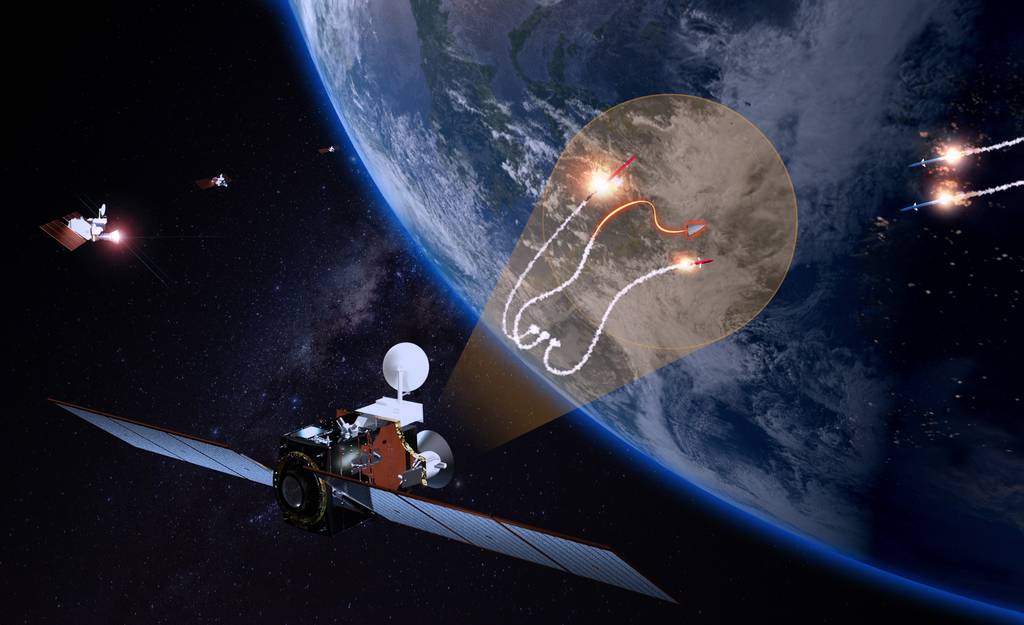COLORADO SPRINGS, Colo. —The U.S. Space Development Agency expects its constellation of missile detection satellites to track its first missile launch in the coming weeks.
The eight spacecraft, built by SpaceX and L3Harris Technologies and launched in three batches over the last year, make up the agency’s so-called Tranche 0 Tracking Layer. The systems will demonstrate the ability to observe and collect information on missiles launches.
In order to draw data from a test flight, the agency’s satellites must be positioned over the area where the test is taking place — typically Vandenberg Space Force Base in California or another Defense Department site. Derek Tournear, SDA’s director, told reporters April 10 the first tracking satellites have been collecting and transmitting, but their position has yet to align with the timing of a missile launch.
“We’ve been teamed very closely with [the Missile Defense Agency], which has actually been adjusting some of their launch times for some of their testing to make sure we have good overflight of our satellites so we can see their tests,” he told reporters during a briefing at the Space Symposium in Colorado Springs, Colorado. “We expect that to come up pretty quickly.”
He noted that the satellites are also scanning global “hot spots” for missile activity as they orbit the Earth.
One constraint with the initial demonstration tranche is its limited number of satellites. The agency doesn’t expect to reach global coverage, which will require about 40 spacecraft, for a few years. Four of the eight spacecraft in orbit are sending data — the latest satellites, launched in February, are still moving through their checkout phase — which means SDA can only provide about 10% of that coverage.
Another limiting factor is that the Tranche 0 demonstration satellites are transmitting more data to the ground than the operational spacecraft will. That’s because the agency wants to collect as much information as possible during its demonstration phase, Tournear said. The amount of data being offloaded means the dissemination process takes longer.
“It takes one to two days after we take an image of an event to get all of those data down to then run through the algorithms,” he said. “That’s why these targets of opportunity are unpredictable — because we can’t get the data down to look and then retest it.”
The agency’s missile tracking layer will eventually include at least 100 satellites. Tranche 1 will add 35 spacecraft, and Tranche 2 will include another 54.
Tournear said the agency will set the number of spacecraft for Tranche 3 later this year, a decision determined in part by congressional feedback on its fiscal 2025 funding request, which includes $1.7 billion for the effort.
“The baseline plan has been 54, very similar to the Tranche 2 plans,” he said. “As we go through the budgeting process for this year ... we’ll see whether we stick with that 54.”
Tranche 3 satellites will have similar capabilities to earlier satellites, Tournear added, noting that the performance improvement will come from having more capacity in orbit.
“It’s going to be continuing to build out off of Tranche 2 tracking to get towards that number of 100 satellites,” he explained, “adding in more of those missile defense satellites as we go to make sure that we have enough coverage for the missile defense mission by the 2030 time frame.”
Courtney Albon is C4ISRNET’s space and emerging technology reporter. She has covered the U.S. military since 2012, with a focus on the Air Force and Space Force. She has reported on some of the Defense Department’s most significant acquisition, budget and policy challenges.








